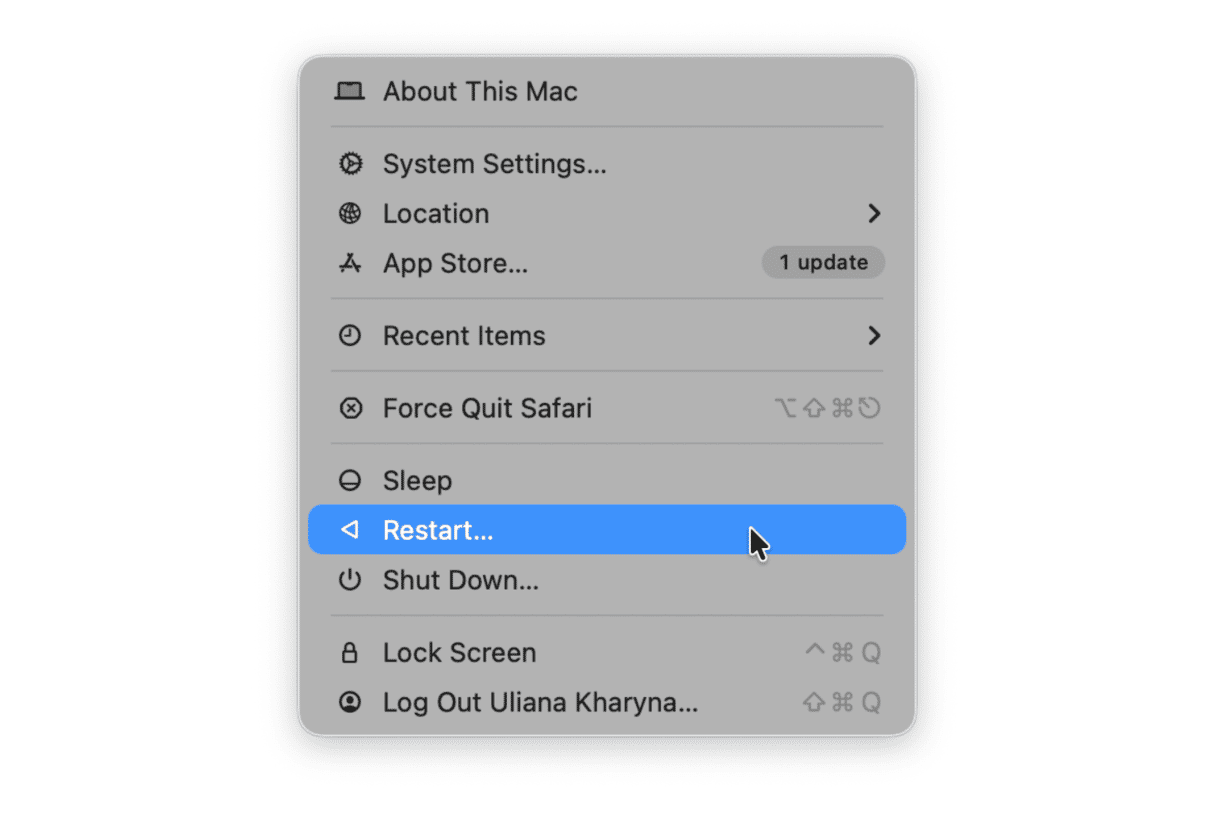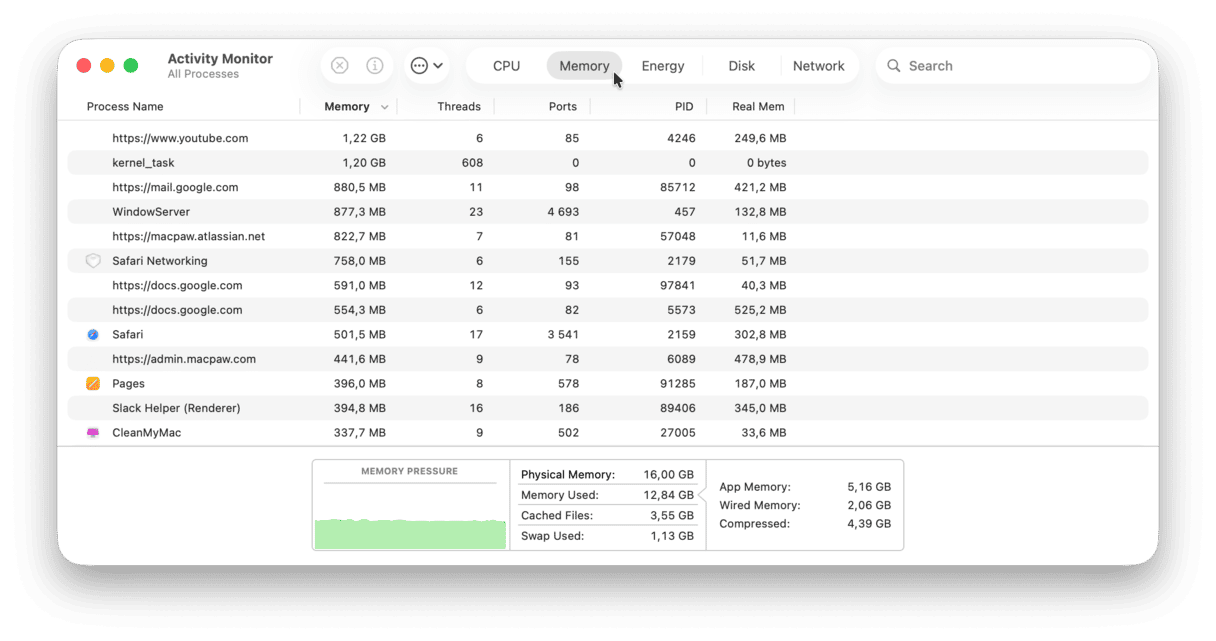Before we get our hands dirty, here’s a word of warning. If you’re wondering how to reboot a MacBook Pro, bear in mind it’s the last resort when all other methods to unfreeze your Mac had failed. Don’t try it too often, as it may harm your system. No question, your Mac can handle rapid power losses, and your hardware most likely won’t be hurt. What’s at risk, though, is your data because each time you force reboot a Mac, it affects the consistency of the file system. Now that you’ve been warned, let’s go.
Symptoms your frozen Mac needs a force restart
- Applications are not responding
- The pointer is not responsive
- Loud fan noise
- The screen goes black
- Mac unable to restart
Can you move the cursor? If yes, try this
Before you force restart a Mac, it’s always recommended to first try a software solution.
- Go to the Apple menu.
- Choose Restart.
- Click Restart in the menu that appears.

Two ways to force restart a Mac
The simplest method: press and hold the Power button till your Mac shuts down. Press the button again to restart it.
If your Mac hangs for good and the pointer is inactive, press and hold Control-Command while pressing the Power button.
This is an alternative key combination to force restart a Mac. By the way, if you are on an iMac, the Power button is found on the back of your Mac. Voila!
Is Shut Down any different from Restart?
The difference between Shut Down and Restart is quite self-explanatory. When you perform a restart, your Mac will turn on again, loading its previously active apps.
As for shut down, your Mac won’t start until you press the Power button again.

Interestingly, all new Mac models have an automatic reboot feature built-in. So, even if you sit and do nothing, your frozen Mac would eventually reboot by itself, though it takes a bit of patience.

How to force shut down a frozen Mac
If you need to force shut down a MacBook Pro or MacBook Air, all you need is again to press a Power button on your Mac’s keyboard.
- Press and hold the Power button for 2 seconds.
- Choose Restart, Sleep, or Shut Down in the menu that appears.
If you don’t want to reload the baggage of your previously opened apps, tick off “Reopen windows when logging back in.” We recommend you deselect this option when your Mac is slow to lighten the weight on your RAM.

If your Mac won’t shut down:
- Press and hold the Power button.
- Hold the button until the Mac shuts down.
Needless to say that when you force restart a Mac, all your unsaved projects may be lost. It’s unfair, we know.
Why does my Mac keep freezing?
The obvious explanation is your Mac lacks memory. Or to put it another way, there are too many active processes running on your Mac. First off, go to Activity Monitor to check your memory usage.
- Go to Applications > Utilities > Activity Monitor.
- Click the Memory tab.

Now, look into how heavily your Memory is loaded. Quit apps that eat up too much memory for no reason. While this may work as a temporary solution, it doesn’t stop your Mac from freezing up again. You can either force reboot your Mac each time or opt for a radical solution. Below are a few more ideas you can try.
More ways to fix a frozen Mac
Clean up your Mac
Remove old unused apps, system junk, and pervasive browser extensions. For this purpose, try running CleanMyMac — a dedicated cleaning, optimization, and maintenance app for Mac.

It’s quite effective in removing all junk from your Mac and has several helpful utilities, like RAM free up or app uninstaller. Get your free CleanMyMac trial.
Restart your Mac in the Diagnostics mode
For Intel-based Mac, shut down your Mac and reboot while pressing the D key. Within the menu that appears, launch the Apple Diagnostics tool. This will check your Mac’s drive for errors. From then, follow the prompts to finish the diagnostics.
For Mac with Apple silicon, continue pressing the power button after rebooting your machine. Once the startup options window is loaded, release the power butting and press Command + D. Now, follow on-screen prompts.
Reinstall your macOS
This is the most radical of all methods; that’s why it’s so effective.
- How to clean install macOS Monterey
- Instructions for macOS Ventura
- How to clean install macOS Sequoia
- Steps for macOS Sonoma
- A guide on clean installing macOS Tahoe
Hope this guide has helped you. Before you force shut down this article, feel free to share it using the social buttons below. Cheers!







